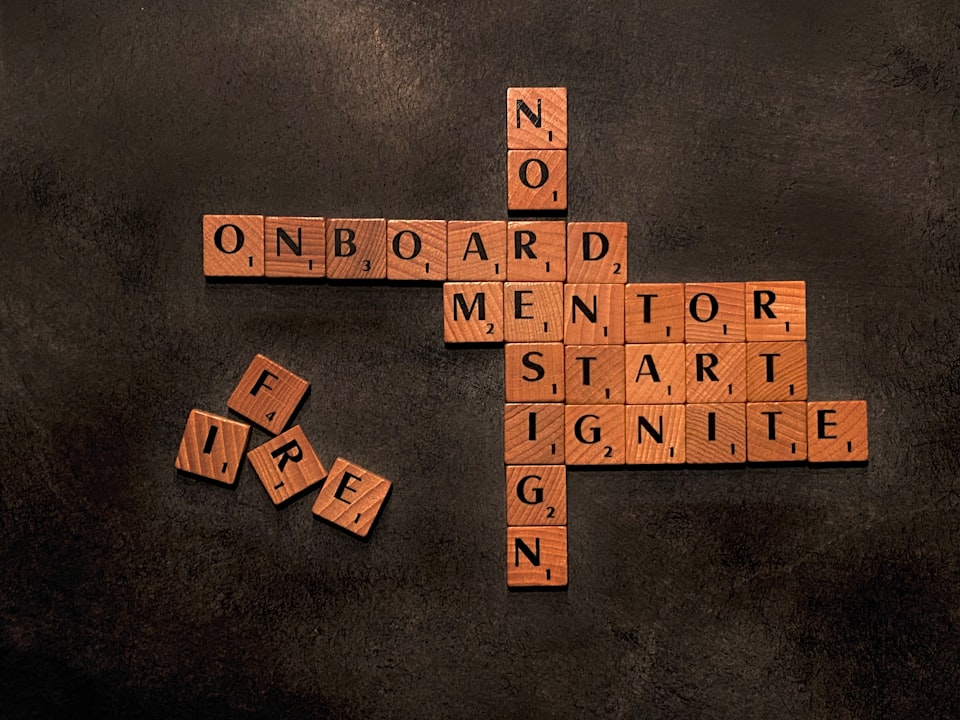
In the past 18 months, BestSelf Co has gone from a 2 person operation of myself and Allen to a full team of people. In fact, we just celebrated our third team member being with us for over a year. Between contractors, part-time and full-time people, we have around 16 people who play some role in the team, between customer support, marketing, development, and design.

.. Getting there has not been easy.
In this post I’ll cover:
- How NOT to hire someone
- How to define a job role
- How to create an automated application process that only brings qualified candidates (and saves you tons of time and energy)
- The system we used for hiring finally worked!
- The tools we use that make boring paperwork easy
How NOT to Hire Someone
We hired our first key person in March of 2016, and the second shortly after.
At the time we were two months into running our online store after having completed our Kickstarter campaign and fulfillment. It was just Allen and myself trying to do everything, our bandwidth was maxed out and we were desperate to find people to help us lighten the load.
As a result, we were reactive with our hiring and didn’t set ourselves or them up for being successful in the role.
Unfortunately, these first two people we brought on are no longer with us.
It’s not you, it’s me
It wasn’t that they weren’t good people, it’s just that we didn’t do a good job of hiring or training them. A big issue was that we hadn’t clearly defined the role or the person we were looking for when we posted the job.
When we were hiring we were in growth mode and needed people fast — this speed came back to hurt us later.
When you hire someone and don’t make the time to train them properly, the wheels will almost always start to come off. It’s imperative that you give people all the tools they need to succeed in their roles.
It’s not the fault of the person you hire for “not doing their job properly”, as the leader you did not do your job when hiring.
The biggest position we had an issue with at BestSelf Co was hiring for our operations position because we were in a situation where we didn’t know what we didn’t know.
As a company with multiple international warehouses selling and shipping physical products, we only had a small idea of what we needed and were still learning as we went.
We thought we were looking for someone great at creating systems who was highly organized. However, there’s a whole other set of skills this person needed which included experience with handling a physical product business, inventory, and everything that goes along with that. We kept trying to hire entrepreneurs we knew when the position required someone with an experience in logistics.
This key aspect was what we were missing with the first two hires for our Operations role. One of my regrets from 2016 (you can read in my annual review was this issue with hiring.)
Hire Slow. Fire Fast.
A book that both Allen and I read before hiring again was ‘Who: The Method For Hiring’, which I would highly recommend to anyone trying to grow a team. It walked us through how to find and interview key candidates. Between that and Noah Kagan Hiring Process we’ve brought on 7 key people since going through this hiring process who have been nothing short of incredible.
Here’s what the process looks like:
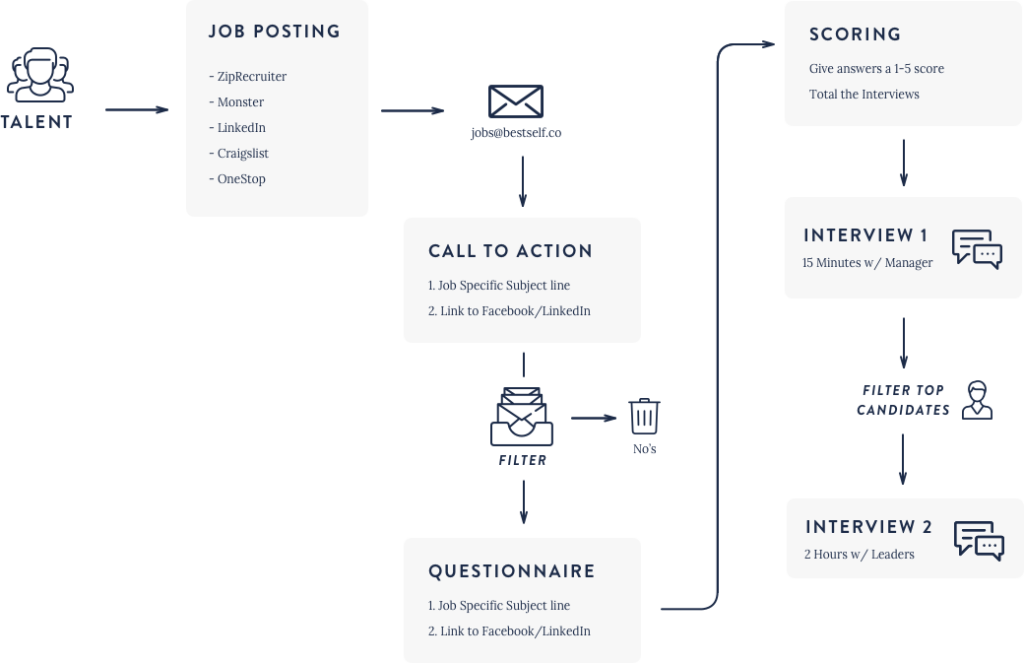
Since applying this methodology to our hiring process we’ve built an amazing team. Here are the core members (note: we have multiple contractors for separate roles):
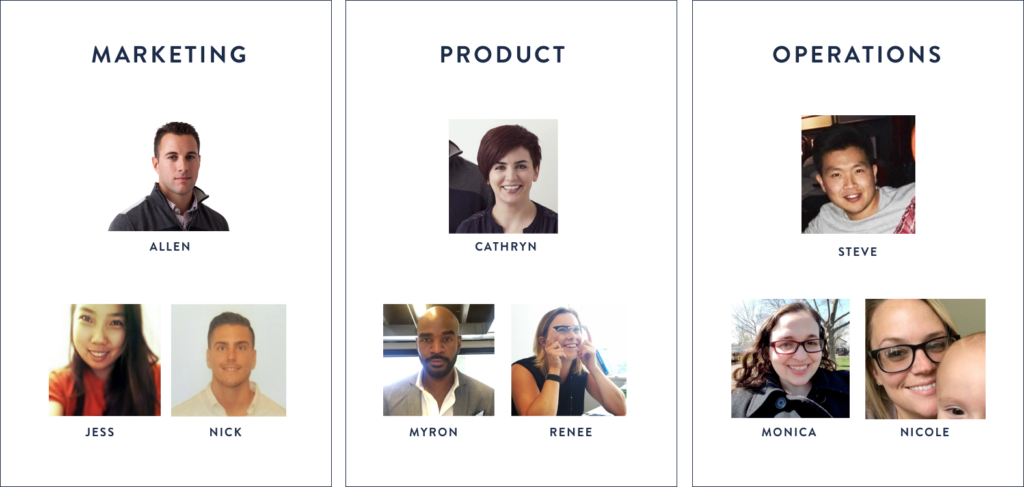
Our Hiring Process
Now you see the dangers of hiring too quickly or hiring the wrong people I want to share with you the process we use to bring people onto our team.
1. Defining the job
The first step is to define for yourself what exactly you are looking for. Who would be the perfect candidate for this role? The first failure point when hiring is not being crystal clear about what you really want the person you hire to accomplish. Some questions you should be asking:
- What day-to-day tasks will they do?
- What experience would you like them to have?
- What programs or skills must they have to be successful?
- What does success look like for them?
- How many hours do you expect them to work?
- What personality type would fit well with your internal culture?
- What personality type would match this role? (Hint: an introvert would not fit in a sales role long-term)
- What can you offer them?
2. Create the job posting
You don’t need to get fancy with your job posting, we used a simple google doc to lay out exactly who we’re looking for. We even created a template to make it faster for each new hire as much of the company information stays the same.
Contents of job posting:
- Fun opening
- Background on our company
- What this new hire will need to do
- Skills/Software knowledge they need
- Who they need to be (characteristics you’re looking for)
- Perks you offer
- Details of what they need to do to apply
3. Create application process
The goal of the application process is to collect as many qualified people as possible. Don’t worry about having to go through a ton of applicants, there’s a way to automate your process to quickly filter out anyone who can’t follow basic instructions – this will save you a TON of time weeding out people whoForms are a bad fit.
Create the instructions to apply
Here’s an example of ours:

Set up a canned response
This is for those who apply and get through to the next round of the hiring process. If you want to know more about Canned Responses, check out this tutorial.
Here’s what our canned response looks like:
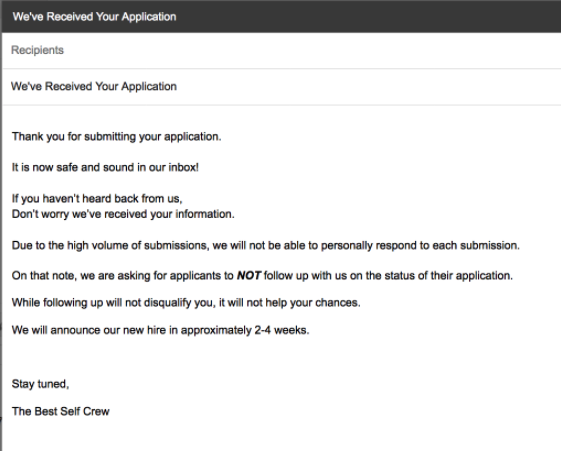
Create filters for your emails
You’ll want to create filters within your email to automatically sort through the applications. This way you can have the people that followed your instructions sent through to the next stage and the rest will be filtered out. This stage is to get rid of people with bad attention to detail such as forgetting to include a link you asked for. For more info on creating filters, check here.
Here’s an example of what our filters look like:

Create a questionnaire form
The link to this questionnaire form will be in the canned response that those who get through stage 1 receive. This form can be created in Google Formsnothing, however, we like Tally because they are sexy AF.
For the questionnaire content, the point of the survey is to get some insights into how the person thinks so ask questions that will make people give extensive answers and real-life scenarios. You should customize the questions depending on the job the person is applying for. For example, a marketing assistant would be given different questions than someone applying for a design position.
Here’s an example of a questionnaire we sent out for a ‘Product Ninja’ position. We ended up hiring 2 people from here!
Test the application process
Make sure your automation for the application process is all working prior to posting the job anywhere, this way you’ll know nothing broken — otherwise some bad applicants may filter in, or even worse, some great applicants may fall through the cracks.
4. Generate a flow of applicants
Now you want to get as many eyes on your job posting as possible so you can collect as many qualified applicants as possible. We used Ziprecruiter to post job ads on a ton of different sites, it’s super easy and takes a lot of the manual work out of the process. Other sources for generating a flow of great applicants are:
- Referrals from the business network
- Referrals from personal network
- Hire external recruiter
- Your customer list (we found 2 people from here!)
Since we have a pretty extensive personal network of people who know good people we posted on our personal Facebook pages and offered between a $500 and $1000 referral if someone sent a candidate our way that we ended up hiring.
Here was one of those such posts:
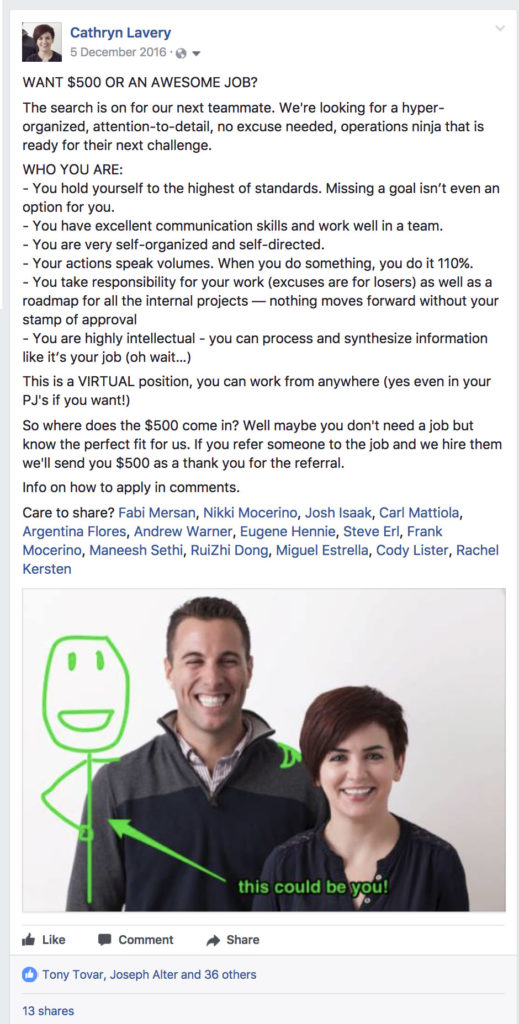
Why the picture? We want as many people to see the post as possible, to do this we wanted to make it more interesting and fun (also Facebook algorithm tends to like pictures).
No lie, I’ve been 2–3 versions of this picture for each time we’ve posted, see:

5. Review Applicants
Once you start collecting applicants you can go into the survey and review the answers, from here you can score them on a 1-5 scale based on what you thought. At this point, you want to set up quick 15-minute interviews with all the 5’s (and the 4’s if you feel like it makes sense). For positions like designers, I weigh their portfolio above their answers to our questionnaire so you can use your judgment with this.
6. Interview Applicants
The interviewing is a four-part process, we got it from ‘Who: The Method For Hiring’ which I would highly recommend you pick up. This process can go fast or slowly, for some we’ve hired it’s been over several months, and for
The 4-Part interviewing process can go fast or slowly, for some we’ve hired it’s been over several months, and for others it went much quicker. The point is to ensure you vet and find the right person because a bad hire will cost you in the long run.
Here’s what that looks like:
- The screening interview
- The Who Interview
- The focused interview
- The reference interview
For the initial screening interview here are the 4 questions we would ask:
- What are your career goals?
- What are you good at or interested in doing professionally?
- What are you not good at or not interested in doing professionally?
- Who were your last 5 bosses and how will they each rate your performance on a 1-10 scale when we talk to them?
I’m not going to go into outlining each part in detail, just pick up this book where they’ll outline the purpose and outcome for each as well as provide the questions.
7. Hire someone
Tools we use to make hiring easy:
Gusto – For payroll and filing appropriate taxes
Track1099 – For contractors, ensuring you have the paperwork you need at the end of the year
Bill.com – For automating ACH Payments and invoice payments easy
Hope you found this useful and can use it for growing your team!
I save my best stuff for my emails. No spam ever.
